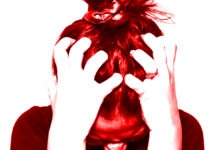Birdwatching, at its core, is pretty simple. All you really need are a pair of binoculars and a field guide. As with any enthusiasm, there are plenty of ways to spend a lot of money, but you can get started pretty cheaply.
A really good pair of binoculars can run you up to $3,000. Most are made by companies like Zeiss, Leica and Swarovski, and there are strong arguments to be made for buying them, but not for your first, second or maybe even third pair. (One of the arguments is durability. I’ve used the same pair of Swarovski binoculars for more than 15 years, and I’ll probably get another 15 years out of them if I don’t forget them somewhere, get them stolen, or inadvertently drop them into the deep part of the ocean.)
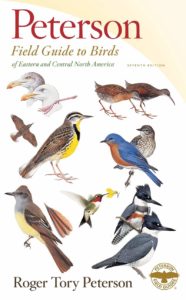
But you can also get a pretty decent pair of store-brand binoculars from a place like West Marine for as little as $120. They are good enough 98% of the time. I used a pair like that for years. And I know my cheapo starter binoculars were probably far better than anything Roger Tory Peterson had in the 1930s while he was figuring out how to make the first real field guide to birds. Just don’t buy anything gimcrack out of, say, the Sharper Image catalog or the back pages of a magazine that isn’t about birds.
When I started birding, I bought a lousy field guide, and for a couple years I went around feeling dumb because I couldn’t make the leap from what I was seeing on the page to what I was seeing in the field. It was like an 800-piece puzzle where none of the pieces fit together.
The best field guides are the ones that help you see what you’re seeing, to help ring the bell of cognitive recognition. I guess this is a short, and by no means comprehensive, roundup of what field guides I feel do that best.
Roger Tory Peterson’s “A Field Guide to the Birds of Eastern and Central North America,” which most people just refer to as the Peterson guide, pretty much created the whole concept of birdwatching. It also saved me as a nascent birdwatcher. It was the first real modern field guide, published in 1934, and the publishers were so sure no one was really interested in such a thing. They only printed 2,000 copies that sold out in a week. Peterson went on to sell over 7 million field guides in his lifetime.
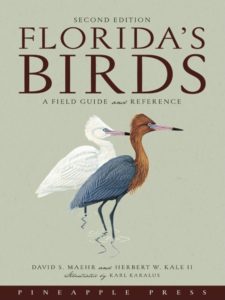
The genius of the book was its simplicity. It was designed to fit comfortably in your hip pocket. The illustrations were simple and clear and had small arrows pointing to the characteristics that made each species distinct. There were maps of where a species was likely to be seen in your part of the country.
I used my copy until it had to be held together with duct tape, then used it some more. Peterson died in 1994, but the guide has been continually updated. In modern times the book is both stylish and a little antiquated, a bit like playing tennis with a wooden racket or driving a wire-grilled MG. But it still does a really good job of showing you what kind of bird you are looking at.
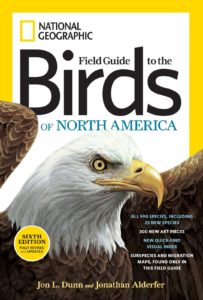
One of the other books I used in my early days was “Florida’s Birds: A Field Guide and Reference” written by David S. Maehr and Herbert W. Kale, and illustrated by Karl Karalus. It lacks maps, and is a little big to carry in your pocket. Its biggest advantage is that it narrows things down to the birds regularly seen in the state, saving a lot of confusion and acquainting you with the usual suspects so you’re prepared to recognize the unusual ones.
The “National Geographic Field Guide to the Birds of North America” screams authoritative in the manner expected from a book produced by the folks at National Geographic. Its maps and text are highly informed and deeply thorough, and the paintings inside are dense with detail – which is kind of my problem with it. All that detail muddies the waters, blurring the distinctions between similar-looking species rather than highlighting them. (The diagnostic details are in the text descriptions, but you have to dig for them.) I can’t argue that it’s not a good field guide, but I think it’s best suited to birders more obsessive and innately perceptive than, say, me.

Which brings me to the “Sibley Guide to Birds,” which I think is the greatest advance to the simple act of bird watching since Roger Tory Peterson. The first edition in 2000 was as comprehensive as the National Geographic guide. It was actually much larger, so everyone was relieved when “The Sibley Field Guide to Birds of Eastern North America” came out. About half the size, it fits nicely in your hip pocket. (There is also one for Western North America.)
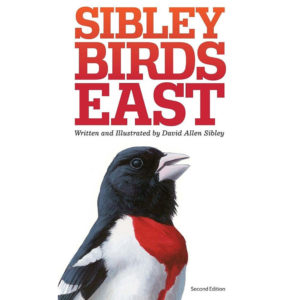
Sibley’s illustrations are the book’s genius. They are impressionistic, showing not what your eye, but your brain, will see. It highlights the differences between species. It sharpens your perceptions rather than straining them.
Both the Sibley Guide and the Peterson guide also come in app form, which is great in that they are always with you, and they contain recordings of most bird songs and calls. But phone screens can be really hard to read outside on bright days. And you kind of need an understanding of bird taxonomy to find what you’re looking for. It’s much easier to find your direction while flailing around in a book. Also, it’s really hard to just randomly flip through an app, to come across a picture of a bird and think, damn, what the hell is that? And then let your curiosity run wild.

















